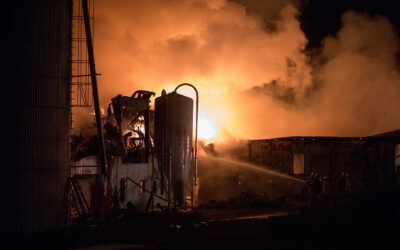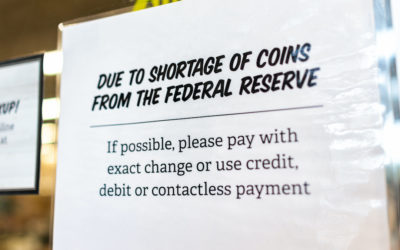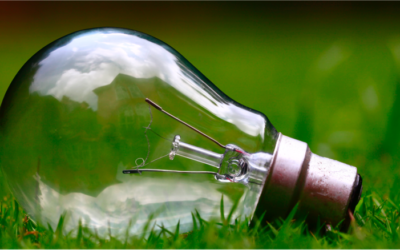Wildfire Prep: 7 Essentials to Pack in Your Emergency Go Bag

To start thinking about what’s truly crucial in your emergency go bag, here are 7 things you should consider adding:
Note: These are estimates based on affordable options that are functional for the average household
1. Portable/pocket radio
Cost: $20 – $40
Weight: .2 – .3 lbs (3.2 – 4.8oz)
Chances are, when a wildfire breaks out, the power goes out along with it. PG&E preemptively shuts off power with a PSPS during dry, windy weather, low humidity, dry vegetation, and other potential catalysts for wildfires. That means no electricity, no cell phones, and there goes one of your most useful tools—if not THE most useful—in your arsenal for emergency prep.
With your connection to the outside world severed, your next best option is to stay tuned in with a radio. Explore local news channels and write down their station numbers in a small notebook (which you should also add to your kit). That way, you won’t need to fiddle with the radio later on, when you’re already scrambling for time.
2. First aid kit
Cost: $15 – $25
Weight: .1 – 1.5 lbs (1.6 – 24oz)
These kits come in all form factors, stocked with the standards like bandages and gauze to hammers and glow sticks.
Personally, I’d go for a middle-of-the-road version, but it’s not to say the extra bits aren’t neat additions. It’s good to know you not only have the ability to bandage a wound, but also smash a car window or slice a seatbelt. Because you never know, right?
3. Flashlight
Cost: $8 – $99+
Weight: .3 – .7lbs (4.8 – 11.2oz)
Here’s another thing lost if you face a dead battery in the once-mighty cell phone. I’d love to say this is a straightforward thing to purchase, but there are *SO* many options (ones with super-bright LEDs, zoomable, tactical, waterproof, etc.). And it’s honestly overwhelming.
For something all-purpose (without all the extra doo-dads), I’d go for a 1000+ lumen headlamp that’s water-resistant and rechargeable. There’s nothing wrong with a standard handheld flashlight, but I like the freedom of hands-free headlamps.
4. Portable cell phone battery pack
Cost: $15 – $30
Weight: .75 – 1.5 lbs (12 – 24oz)
Speaking of phones, if you do have the luxury of recharging it, you’re in luck. But with the likelihood of local power outages in the event of a wildfire, it’s great to have a battery pack (or “power bank”) handy.
Keep in mind these lose their charge over time via self-discharge, which causes a battery pack to lose around 5% of its charge over a 24 hour period, and all the way up to 50-55% gone after 6 months.
So, if you get your emergency go bag all buttoned up and stashed away, you may want to set a calendar reminder to recharge your battery pack every 6 months, just to be safe.
5. Refillable water bottle
Cost: $10 – $100
Weight: .3 – 1.8 lbs (4.8 – 28.8oz)
As you’ve probably heard, humans can’t survive without water for more than the span of a few days, and this means a refillable water bottle should absolutely be in your go bag. Pre-filled bottles are a viable option, and adding one or two is a good idea, but keep in mind it’ll weigh down your bag.
While I’m a fan of the stainless steel variety (because I like my water super cold), it might make more sense to pack a BPA-free plastic reusable bottle. Especially considering extremely cold or extremely hot temperatures aren’t an extra factor in hydration. In fact, the University of Connecticut found that stabilizing your water at 50-68 (10-21º), or around room temperature, is “optimal for palatability and fluid ingestion”. Plus, plastic will lighten your load.
6. Water purification tablets/LifeStraw
Cost: $7 – $20
Weight: .05 – .12 lbs (.8 – 2 oz)
If your emergency/disaster lasts more than a few days, and resources are slim, keeping water purification tablets or a LifeStraw on hand will make your water supply abundant. Abundant as in, you can use the straw to drink directly from streams and lakes. According to their website, LifeStraw uses a hollow fiber membrane to filter bacteria and parasites (99.9999 percent of bacteria, 99.99 percent of viruses, and 99.9 percent of protozoan parasites). How awesome is that?
7. Multi-tool
Cost: $10 – $90
Weight: .12 – 1 lb (2 – 16 oz)
While functional pieces of these might come in first aid kits, it’s worth looking into an all-in-one multi-tool. Some come with scissors, most with knives, but keep an eye out for ones with a fire-starting rod and an emergency whistle. They’re not too much more expensive, and I mean… you can start a fire. I’m sold.
Total Cost: $85 – $400
Total Weight: ~2 – 7 lbs (32 – 112 oz)
Other honorable mentions include:
- 2-4 extra batteries (most radios require 2 AA)
- An external hard drive with backups of important files/photos
- A set of keys for your house/car
- Spare glasses/contact lenses
- Lighters/matches
- Cash (small bills)
- A copy of your ID
- A list of emergency contacts
- Meal replacement bars
- One or two changes of clothes
Pre-packed emergency go bags
While the build-your-own approach can make your go bag as custom as you’d like, a ton of pre-made emergency kits exist on the market.
Usually, these emergency kits say they’ll give you preparation for multiple natural disasters, but if you’re looking for a go bag tailored for wildfires, here’s one by First Aid Survival.
If you’re along the Cascadia Subduction Zone in the Pacific Northwest, check out these Earthquake Kits by Cascadia Quake Kits.
Otherwise, you can go for multi-disaster emergency go bags and kits, which will run you $50 – $400, depending on your family size and other unique needs (like pets, senior care, etc.).
Originally published October 2019, updated September 2022

Nichole Kucher
Digital Marketing Manager
Making ioSafe's fireproof and waterproof data protection known to the world. Writer, dog mom, pro tea-drinker, and avid video game enthusiast. On my off days, you can find me sweating it out in a yoga class, cuddling with my dog, or experimenting with healthy recipes in the kitchen.
Related Blog Posts
Tragedy in Ice and Fire
During the bitterly cold and blustery night on January 16, 2024, four separate fire departments scrambled to the farm and...
Keep the Change: How the U.S. Coin Shortage is Impacting Consumers
Two weeks ago, after learning that my two teenage children will be home schooled for at least the beginning of...
Power Outages are the New Normal in Our California Community
My small community—nestled in the foothills of Northern California—is one of 34 counties that experienced the first of...



